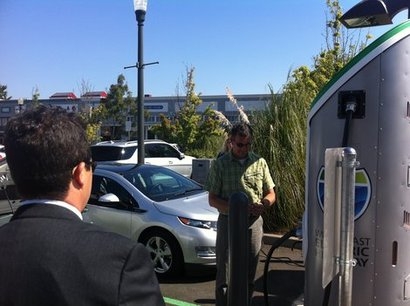
The US economy and its millions of car drivers will fail to fully capture the economic, environmental, and grid benefits that electric vehicles (EVs) provide unless the development of a robust national charging network accelerates considerably from current levels says a new report from the Rocky Mountain Institute (RMI). The risks - commercial, policy, and environmental for manufacturers, policymakers, advocates and drivers - of not having sufficient charging infrastructure to support surging electric vehicle (EV) sales is now greater than the risk of building underused charging stations, according to the report ‘From Gas to Grid: Building Charging Infrastructure to Power ElectricVehicle Demand’.
The RMI report examines the policies, regulations, and transportation electrification ambitions in five states to highlight how the opportunities and challenges around building EV charging stations can vary by geography.
“In the US, EVs are on track to beat gasoline cars on price, without incentives or subsidies by 2025, but the current pace of charging station construction is unlikely to keep up” said Chris Nelder, a manager in RMI’s mobility and electricity practices and report author. “Without a vigorous and sustained construction programme of EV-charging infrastructure, the US is likely to see its vehicle electrification ambitions stifled.”
The “chicken-and-egg” problem that has challenged the EV revolution in the US to date - where different approaches on building out an EV ecosystem until there are more EV vehicles has meant a lower level of consumer interest to buy EVs until there is more charging infrastructure, and vice versa - is about to be swept away by a growing number of increasingly affordable and attractive EVs, the report shows.
The report is aimed at legislators, regulators, elected officials, consumer advocates, and utilities to help them understand the options in their states. It concludes that where EV growth is strongest, charger deployment is lagging EV adoption, as utilities, regulators, and charging station companies debate ownership models, siting, and tariff design.
Bloomberg New Energy Finance anticipates that by 2020, there will be 39 models of plug-in electric hybrid vehicles (PHEVs) and 44 models of EVs available in North America.
“These debates are impeding the charging station growth that will be needed to meet demand and making it more difficult to capture the full value EVs bring to the grid - particularly the value from smart charging to allow for EVs to be charged using the least expensive and cleanest energy, as well as cleaner air, lower transportation costs, and reduced dependence on foreign sources of energy” Nelder added.
The study shows that while California has the most EVs of any US state it also has the fewest number of chargers available per EV - only one public direct current fast charger (DCFC) per 196 EVs and one Level 2 charger per 27 EVs. Hawaii, Colorado, Texas, and Ohio all have similar ratios of EVs to charging stations, from about 1 percent in Hawaii to about 0.15 percent in Ohio.
“We need to move beyond the debate about the equitability of vehicle electrification and stop questioning whether we should be making investments in charging infrastructure - we absolutely should” Jerry Weiland, a managing director of mobility transformation at RMI, said. “It is critical to get right the methods and infrastructure for vehicle electrification from the start, with appropriate tariffs, well-planned charging infrastructure, and the ability to manage chargers, and the time to start working on that is now.”
For additional information:
Rocky Mountain Institute (RMI)
‘From Gas to Grid: Building Charging Infrastructure to Power ElectricVehicle Demand’

